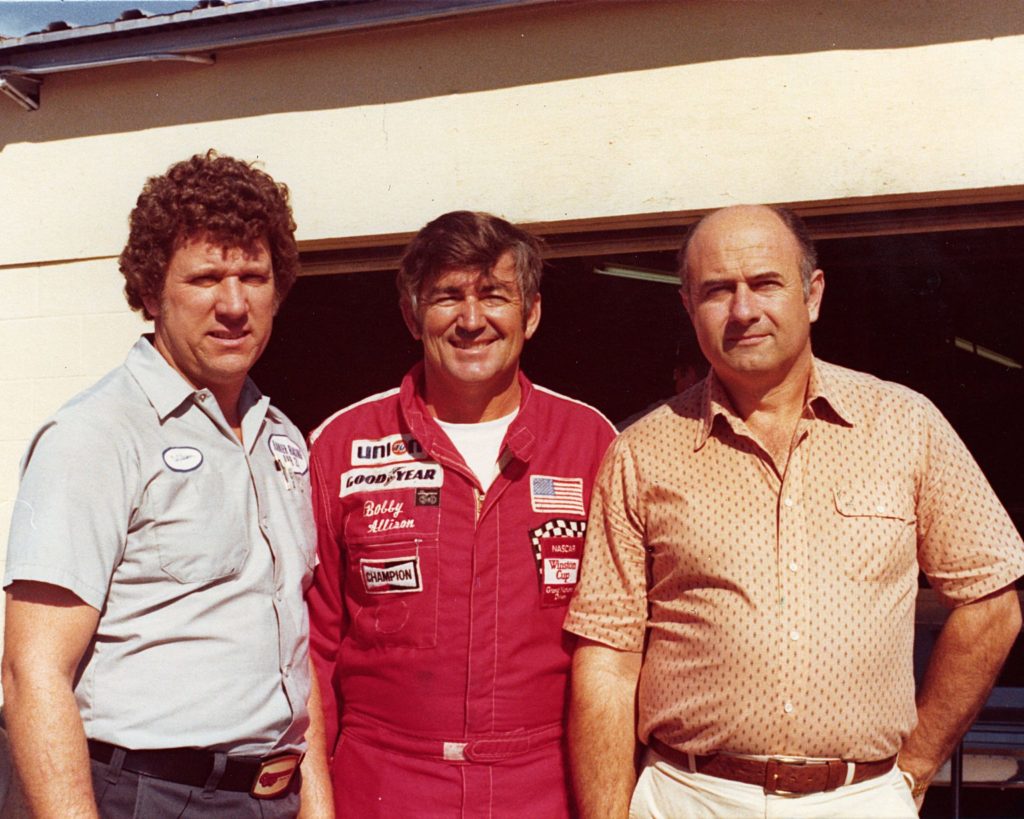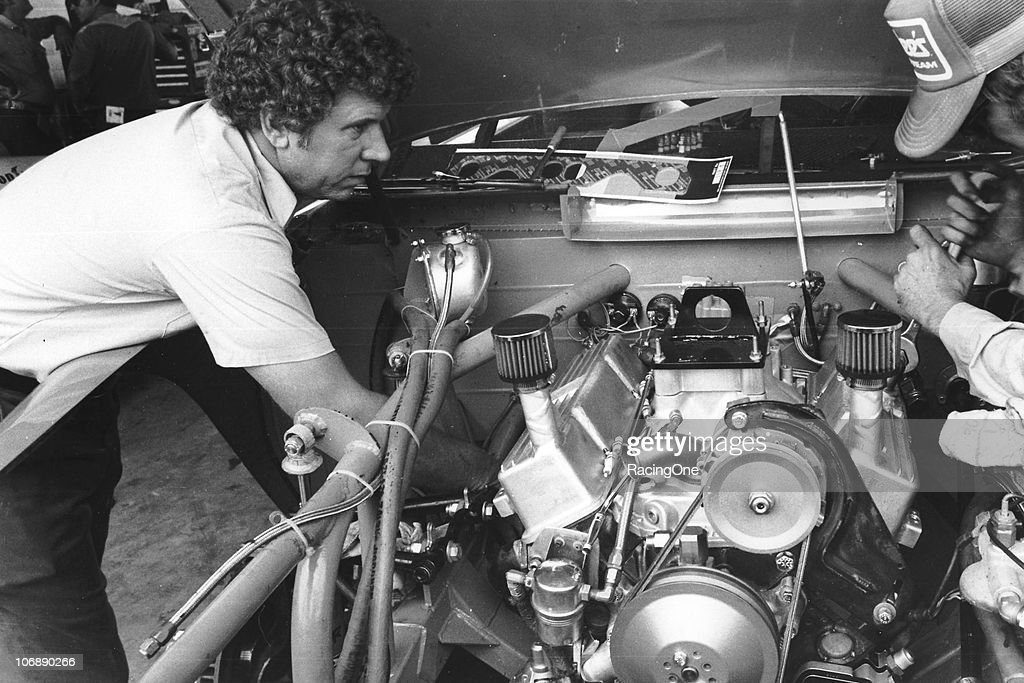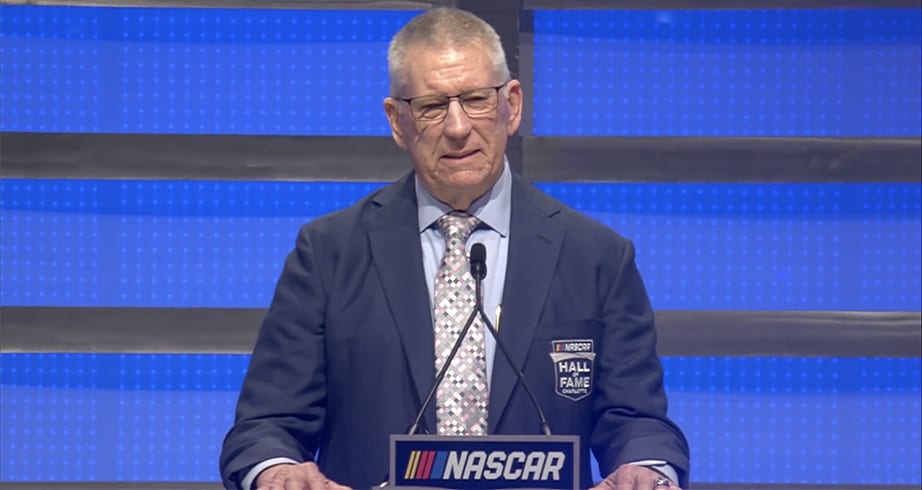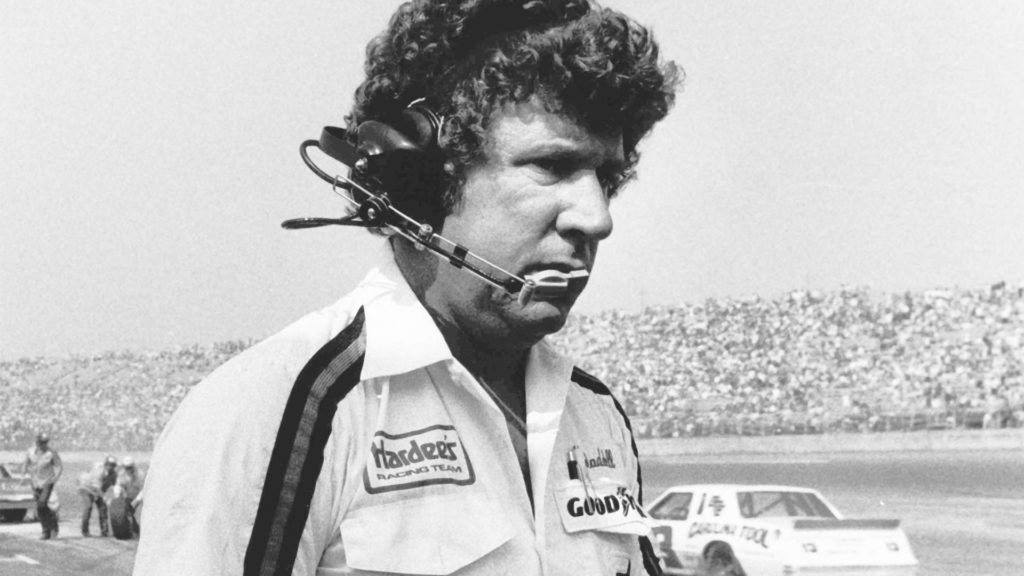Waddell Wilson (born December 29, 1936) is a former NASCAR Winston Cup Series crew chief, engine builder and NASCAR Hall of Famer, Class of 2020. Wilson was the winning crew chief for the Daytona 500 in 1980, 1983, and 1984. He was crew chief or engine builder for Holman-Moody, Harry Ranier, and Hendrick Motorsports. The Drivers he worked with include Bobby Allison, Mario Andretti, Buddy Baker, Geoff Bodine, A. J. Foyt, Junior Johnson, Fred Lorenzen, Cale Yarborough and Ricky Rudd.
Wilson grew up in Bakersville, North Carolina. After graduating from the Nashville Auto and Diesel College in Tennessee then worked for Cummins Diesel in Miami.


Waddell Wilson started driving jalopies, street stocks, and modifieds at the Hialeah, Palmetto and Hollywood short tracks in Florida. About his driving career he said, “I won a few, but before long I figured building engines really was my niche.”
Wilson began as an engine builder for Holman-Moody in the early 1960s and he worked for them into the 1970s. He became recognized after building the engine that Fireball Roberts used to win the 1963 Southern 500. Engines built by Wilson had 109 wins, earned 123 pole positions, and won three championships (David Pearson in 1968–69, Benny Parsons in 1973). Parsons set the record for the first 200-mile-per-hour qualifying lap at Talladega using an engine built by Wilson.
Wilson later took over as a crew chief. His driver Buddy Baker won the 1980 Daytona 500. Cale Yarborough drove a Wilson-prepared car to victory in the 1983 Daytona 500, and the combination repeated their win in the 1984 Daytona 500. Yarborough and Wilson worked together for Harry Ranier in the early to mid-1980s. Between 1983 and 1986, Yarborough/Wilson won nine races in only 60 starts, including four of sixteen in 1983.
Wilson prepared an engine for Hendrick Motorsports that Darrell Waltrip used in a practice session to set an unofficial track record at Daytona that exceeded Bill Elliott’s 1985 mark. Rick Hendrick named Wilson to be the crew chief for his new third Hendrick Motorsports team in 1988, with driver Darrell Waltrip. The friends didn’t mesh well together as teammates, earning only one win, and Wilson was named the team manager after one season. He was replaced by Jeff Hammond. Wilson became Ricky Rudd’s crew chief in 1990 after Hendrick reduced it to a two car team. Hendrick had Wilson be the crew chief for IndyCar driver Al Unser Jr.’s only NASCAR start at the 1993 Daytona 500. Unser finished 36th after crashing out. Between 1979 and 1993, Wilson was the crew chief for 22 NASCAR Winston Cup race wins.
Yarborough later became a car owner. After working for Jim Mattei at Mattei Motorsports in 1998, Wayne Burdette who was purchasing Yarborough Motorsports hired Wilson to be his team’s general manager for the 1999 season with driver Rick Mast. Wilson retired from racing in 2000 and he became a consultant for Jerico Performance Products
Wilson received the “Golden Wrench Award” by the North Carolina Stock Car Racing Hall of Fame in 2006, the same year that Waltrip was inducted in the hall of Fame Wilson was selected to be one of three retired crew chiefs to vote for the inaugural class for the NASCAR Hall of Fame
Waddell Wilson on Racing Routes with Hamm
Wilson also built the engines in four consecutive Daytona 500 pole-winning cars from 1979-82 and won three premier series championships as an engine builder.
In 1980, Baker drove the Wilson-prepared “Gray Ghost” Oldsmobile to victory in the fastest Daytona 500 ever run. To this day, Baker’s Daytona 500 speed record of 177.602 miles per hour still stands and it may never be broken. The Gray Ghost is also on display in the Hall of Honor
Parsons’ victory in 1975 came with an engine Wilson described as “a $200 junk motor” built with pistons from a drag-racing car. No one, least of all Wilson, expected that engine to go all 500 miles, let alone win, but it did.
If he did nothing else, the aforementioned stories would have gotten Wilson into the Hall of Fame.
But the most remarkable Daytona 500 of Wilson’s storied career may have come in 1983, after Yarborough barrel-rolled his Hardee’s-sponsored No. 28 Ranier Racing Chevrolet in Turn 3 during qualifying. On his first of two qualifying laps, Yarborough ran 200.503 mph, which should have made him the first driver to qualify at more than 200 mph at the 2.5-mile Daytona track.
It looked as if Yarborough would easily top 200 mph at Daytona, averaging 203 mph as he headed down the backstretch on his second lap. Then, disaster.
He (Yarborough) goes into Turn 3 and the car got loose and he flipped it,” said Wilson, who was the team’s crew chief as well as engine builder. “It had a notchback (roofline) and no rear spoiler on it, really. I went to see Cale to see if he was alright and he said, ‘You done everything right except one thing. You didn’t put controls in it so I could fly it.’
“He said, ‘I knew I was in trouble when it got quiet inside.’”
Asked what happened, Yarborough said, “I just got airborne. The wind got it and just took it off the race track.” As for his 200-mph lap, Yarborough added, “It was a good lap. I just needed another one like it.” More on this article from NASCAR Hall of Fame https://www.nascarhall.com/hall-of-famers/inductees/waddell-wilson






